Caring for tomato seedlings has subtleties - without maintaining the necessary microclimate, it makes no sense to expect healthy and strong seedlings. Tomato seedlings can turn yellow and start to dry due to many reasons that are not always easy to find and eliminate. But, if you notice in a timely manner that young plants began to feel bad, it is possible to save the future crop.
Content
Common problems
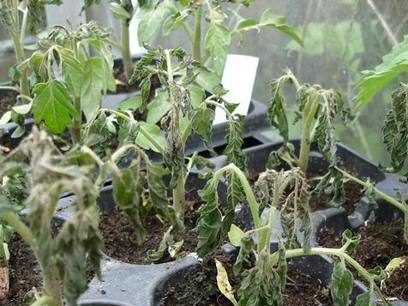
Tomatoes are not particularly urgently in need of strict adherence to agrotechnical standards and do not cause special problems at the stage of seedling preparation. The seed material of tomatoes, in comparison with other garden crops, is characterized by increased germination, and seedlings are quite hardy and can easily pick and land in open ground.
But, not always the development of seedlings goes smoothly - sometimes, due to the inexperience of the vegetable grower, at the seedlings of tomatoes, the tips of the leaf plates can dry out, and the leaves can completely fall off. Depression of the appearance of the plant is the first sign of care errors that can still be corrected. Most often, tomato seedlings turn yellow and dry for the following reasons:
- insufficient wetting of the soil mixture;
- reduced humidity in the room with seedlings;
- pest attack either fungal disease;
- lack of nutrients in the soil;
- insufficiently accurate transplantation to a permanent place;
- acidification of the earth mixture;
- sunburn burns.
If the problem is in the soil mixture
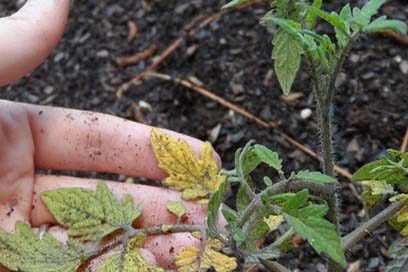
Excess peat in the prepared soil mixture does not always positively affect the speed of seedling development. Sometimes a large peat part in the substrate can lead to a change in the color of the leaf plates from green to faded yellow. In addition to an excess of peat, tomato can lead to yellowing of seedlings due to the absence of sand and perlite, in which the soil in the seedling container knocks into a heavy dense lump with minimal air permeability, which interferes with the proper development of the tomato root system.
Soil salinity can also lead to to yellow and whitish areas on leaf blades seedlings. Excessive amounts of salt in the soil mixture can be detected by light streaks on the surface of the substrate in a container with young plants. Salinity appears in the case of irrigation with excessively hard and not settled tap water, as well as when top dressing was excessively plentiful and frequent. To reduce salinity, it is necessary to remove the upper 3 cm of soil and then water it with “soft” water. To solve the problem with the earthen mixture, it is necessary to transplant the tomatoes into the new soil. The substrate should consist of the following components:
- fine river sand, previously washed - 1 share;
- wood ash - ½ parts;
- perlite - 1 share;
- turf land - 2 parts;
- coconut substrate - 1 share;
- peat or leaf land - 1 part.
Such a substitute to replace the past will improve the state of seedlings of tomatoes that have turned yellow and have begun to dry. But, such measures can save young plants only if they are taken in a timely manner. If the leaves on individual copies have already dried up, such tomatoes cannot be saved. And the rest of the young plants will not be able to develop enough to give a normal crop volume.
Incorrect irrigation scheme
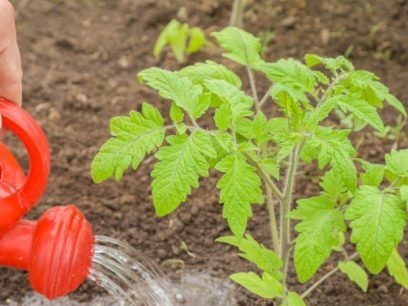
Tomato seedlings need a certain irrigation scheme - it is necessary to moisten the substrate in the seedling tank abundantly, but rarely and you can use only the settled, not hard water at room temperature. Watering seedlings should be done exclusively in the morning or evening hours, and water should be poured under the root - so that moisture does not get on the sheets. Seedlings of tomato equally painfully perceives both overflows and periods of drought. The stagnant liquid in the seedling tank does not allow the root system of seedlings to receive a sufficient amount of oxygen.
Top dressing
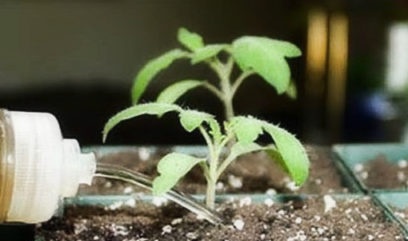
Nutrients in the soil must be contained in optimal concentrations. When there is a shortage or an overabundance of certain trace elements, tomato seedlings may turn yellow and begin to dry. To determine exactly what is wrong with young plants, you need to pay attention to a certain list of signs indicating a lack of specific elements. The main symptoms are as follows:
- Potassium - the lack of an element is expressed by the yellowness of the ends of the leaves against the background of green veins. To solve the problem need feeding potassium humate or K. sulfuric acid.
- Calcium - the foliage deforms and twists. The upper leaf blades turn yellow and the lower green. To solve the problem, fertilizing with calcium nitrate is necessary.
- Nitrogen - both the ends of the leaves and their veins turn yellow. Basically, the lower leaf plates acquire yellow color, and the upper sheets are small. In order for tomato seedlings to recover, they need top dressing with ammonium nitrate, urea, chicken droppings or overripe barn.
- Zinc - the lower leaves are faded yellow, discolored. It is necessary to spray the seedlings with zinc sulfate.
- Magnesium - with a lack of contour and edging of leaf blades acquire a yellow color, streaks of deep green color. They solve the problem by treating tomato seedlings with magnesium sulfate.
- Iron - new sheets grow small. The front part of the leaf becomes yellowish with prominent green veins. The deficiency is compensated by spraying with vitriol.
- Manganese - foliage turns yellow and dries, then falls off. To correct the situation, zinc sulfate treatment is necessary.
- Phosphorus - a micronutrient deficiency is expressed by the yellow apical part of the seedling against the background of the lower one, which has a clear purple tint. It is necessary to feed with an extract of superphosphate.
Tomato Disease
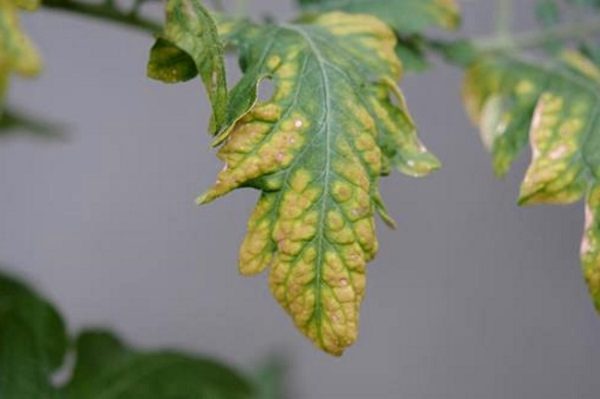
Diseases of the bacterial and fungal type can lead to yellowing of foliage on tomato seedlings. Such disorders are determined by characteristic symptoms and treatment is selected. If you do not save the seedlings from diseases on time, then you can lose all copies. The most common causes of yellowing of leaves from diseases are:
- Fusarium
- blackleg;
- rot.
To stop the development of these diseases, you need to check the plants for the degree of damage. Those units that cannot be saved are ruthlessly thrown away. The remaining tomatoes are washed with a weak solution of manganese and planted in fresh soil. The container after fungal and bacterial lesions together with the soil is treated by heating at high temperature.
Preventative measures
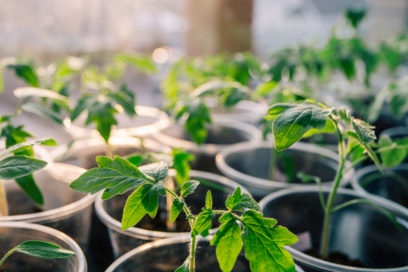
The best way to get rid of problems with plants is to prevent any irregularities. Buying seeds is one of the main factors - be sure to check the expiration dates and choose proven varieties.So that nothing abnormal happens with the leaves of tomato seedlings, you need to follow the maintenance standards and carry out preventive procedures:
- In the first period growing seedlings need to provide lighting for 16 hours. To do this, use phytolamps, which include after sunset.
- The temperature in the room where the container with tomatoes is located is maintained at 22-25 ° C. When the first seedlings appear, it must be reduced to the level of 17 ° C for 7-14 days.
- Watering the primary sprouts is best done using a spray gun - so the soil will not be eroded with water. When the plants begin to form the first leaves, the watering method needs to be replaced with a pan.
- To preserve plants from diseases, it is important when sowing seeds to heat the soil with heating, and the seeds themselves with a pink solution of manganese.
Pests that also lead to yellowing of seedlings are easy to spot on young plants. It is better to remove them from the tomato in advance. To do this, add vermiculite or perlite to the ground. When the plants were planted in the soil that is optimal in terms of nutrient components, fertilizers begin to be applied no earlier than 7 days later, being guided by the appearance of the seedlings. Healthy tomatoes have a thick stem, even with small sizes, and the leaves are expressively green.

 Low-growing tomatoes, without pinching: 5 of the most delicious varieties
Low-growing tomatoes, without pinching: 5 of the most delicious varieties Why tomato seedlings grow poorly
Why tomato seedlings grow poorly We grow a tomato in a shell
We grow a tomato in a shell Growing tomatoes without watering according to the method of Kazarin
Growing tomatoes without watering according to the method of Kazarin